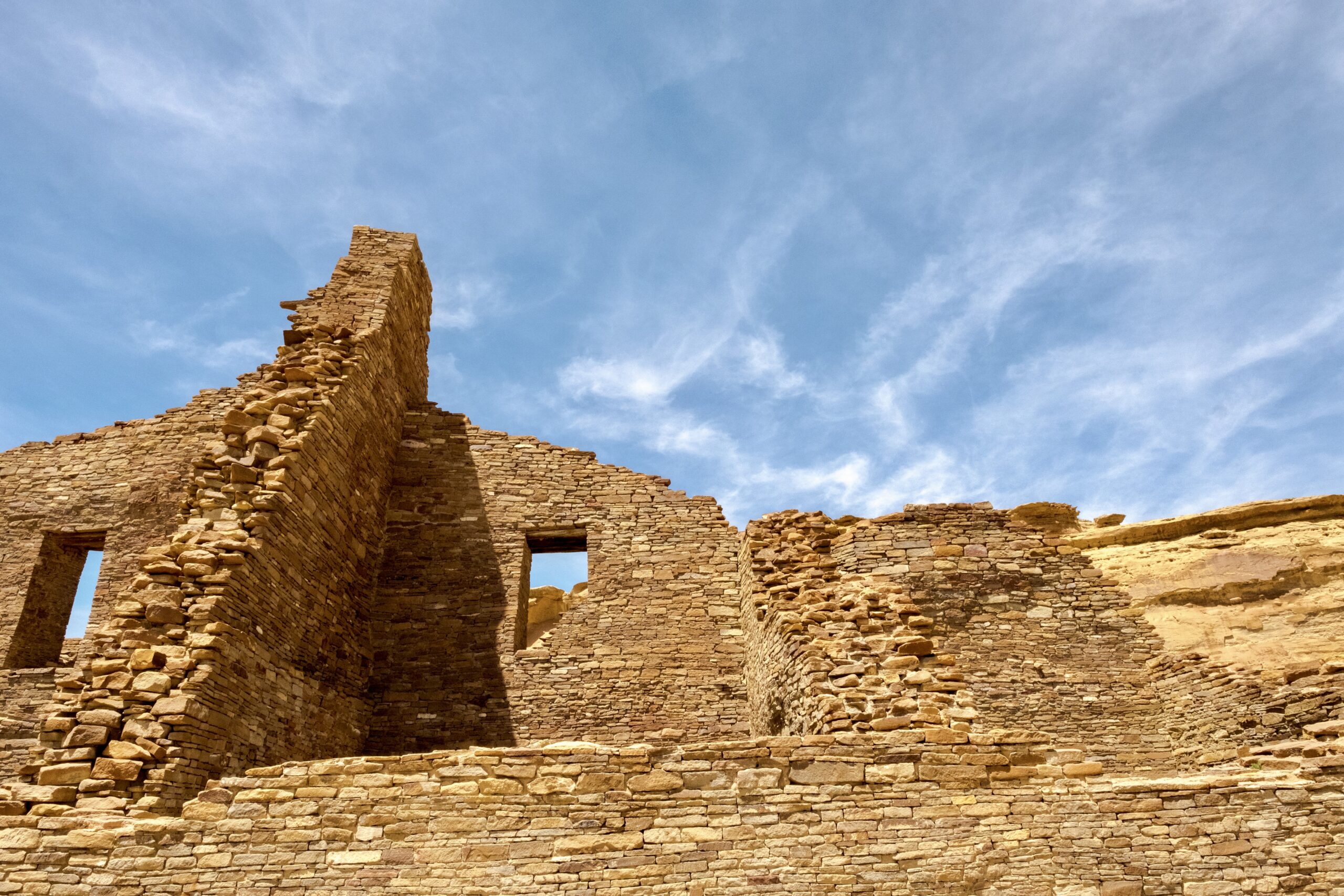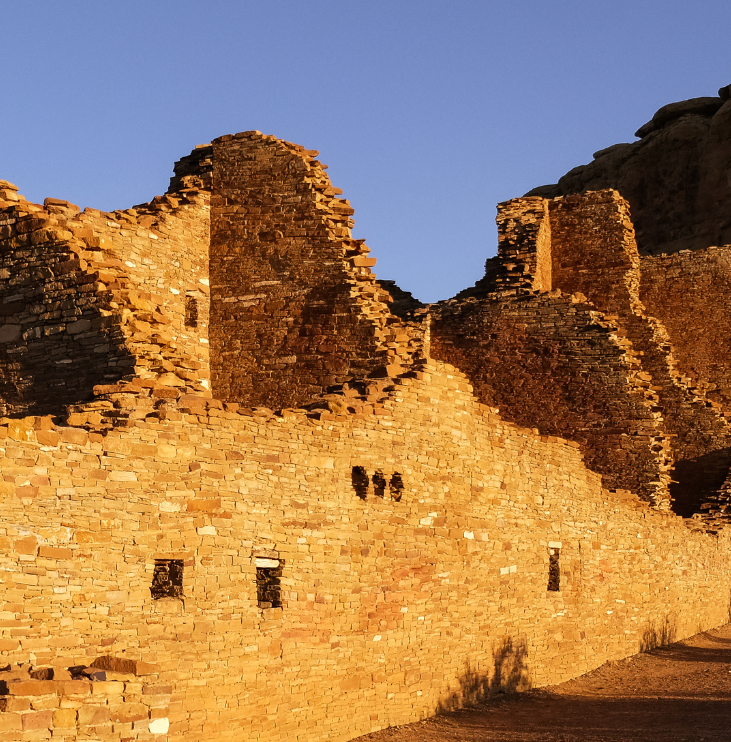Protect Greater Chaco from oil and gas development
 Protection Campaigns
Protection Campaigns
Biden Administration and Interior Department Ban Oil & Gas Leasing Around Chaco Culture National Historic Park for Next 20 Years
Read more here
Get Involved
Greater Chaco
Action Center
Visit Page
Youth Comments
Students from Albuquerque Public Schools shared their comments to help Support the Greater Chaco ->
Despite Chaco’s rich cultural ties to past and present, it's awesome archeological resources and its sensitive natural landscapes, development in the San Juan Basin continues to threaten special cultural and natural areas both within and outside of Chaco Culture National Historic Park. The oil and gas industry has expanded development to lands that were previously not cost-effective to tap, leaving more lands vulnerable than ever before. Proposed expansions of oil and gas development on nearby Bureau of Land Management (BLM) lands continue to threaten special cultural areas both within and outside of the Park, connective corridor spanning from the Park to the Ah-shi-sle-pah Wilderness and Bisti/De-na-zin Wilderness.
On June 2, 2023, Secretary Deb Haaland of the Department of the Interior issued a final decision to administratively withdraw approximately 355,000 acres of federal public lands and minerals surrounding Chaco Culture National Historical Park from new oil and gas leasing for a period of 20 years. While this protection has been decades in the making, we continue to advocate for more permanent federal protections for the public lands surrounding Chaco Culture National Historic Park.
Chaco Culture National Historic Park preserves a major prehistoric center of ceremony and trade in the San Juan Basin just south of Farmington, New Mexico. Natural beauty and cultural significance meet in this area of northwestern New Mexico where ruins, artifacts, and other archeological sites radiate from Chaco Canyon’s cultural epicenter. The extensive and well-preserved cultural history found here earned designation as a UNESCO World Heritage Site in 1987.
Chaco Culture
Around 200 A.D., the first farmers settled in what is now Chaco, using agriculture to supplement hunting and gathering and building small pithouses on the mesa for shelter. This era of early Pueblo culture lasted more than a half-century until drastic changes in the complexity and scale of building construction changed the face of both the culture and the landscape. For three hundred years, this new version of Pueblo culture (coined Anasazi) flourished, constructing impressive buildings and roads throughout the Greater Chaco Region, with Chaco Canyon as the epicenter. And then…. they vanished, abandoning Chaco Canyon around 1150 A.D. There are many ideas about the cause of this sudden exodus, including prolonged drought, but the likely complex reasons for this exodus remain a mystery.
Chacoan Great Houses
Amazing building skills are what most define the Chaco Culture. Massive greathouses are a significant divergence from traditional Pueblo settlements. Greathouses are unusually large multi-story masonry buildings made of stacked stone (usually sandstone) and mortar. In addition to their size, highly refined masonry techniques and advanced engineering make these structures truly spectacular featuring hundreds of rooms, some very large, and several circular kivas built within the main structure (in traditional Pueblo domestic settlements kivas were located in a central plaza). Each greathouse also had a separate great kiva nearby. Over 200 outlying Chacoan greathouses exist in the Greater Chaco Region with a bit of mystery still surrounding their purpose. Some believe they served as the center for massive settlements, while others them as trade centers or ceremonial developments.
News Updates
Press Release: New Mexicans Applaud the Reintroduction of Legislation to Protect Public Lands Surrounding Chaco Canyon
FOR IMMEDIATE RELEASE April 10, 2025 Contacts: Keegan King, keegan@native-lands.org, 505-910-0712 Paul Reed, preed@archaeologysouthwest.org, 505-486-4107 Sally Paez, sally@nmwild.org, 505-350-0664 Emily Denny, edenny@tws.org, 707-407-6840 Mary Jo
Read MoreCelebrating One Year of Protection for Greater Chaco Landscape
Contact: Mark Allison, mark@nmwild.org, 505-239-0906 Mark Allison, Executive Director of New Mexico Wild, has issued the following statement on the first anniversary of the Department
Read More
Oil and gas development on state and BLM lands near the park have already impacted the Greater Chaco Landscape

![]() The Greater Chaco Region radiates from the main park at its center, expanding across the Four Corners Region and the San Juan Basin with ties to other well-known cultural sites such as Mesa Verde, Canyon of the Ancients, Bears Ears, Hovenweep and Aztec Ruins.
The Greater Chaco Region radiates from the main park at its center, expanding across the Four Corners Region and the San Juan Basin with ties to other well-known cultural sites such as Mesa Verde, Canyon of the Ancients, Bears Ears, Hovenweep and Aztec Ruins.
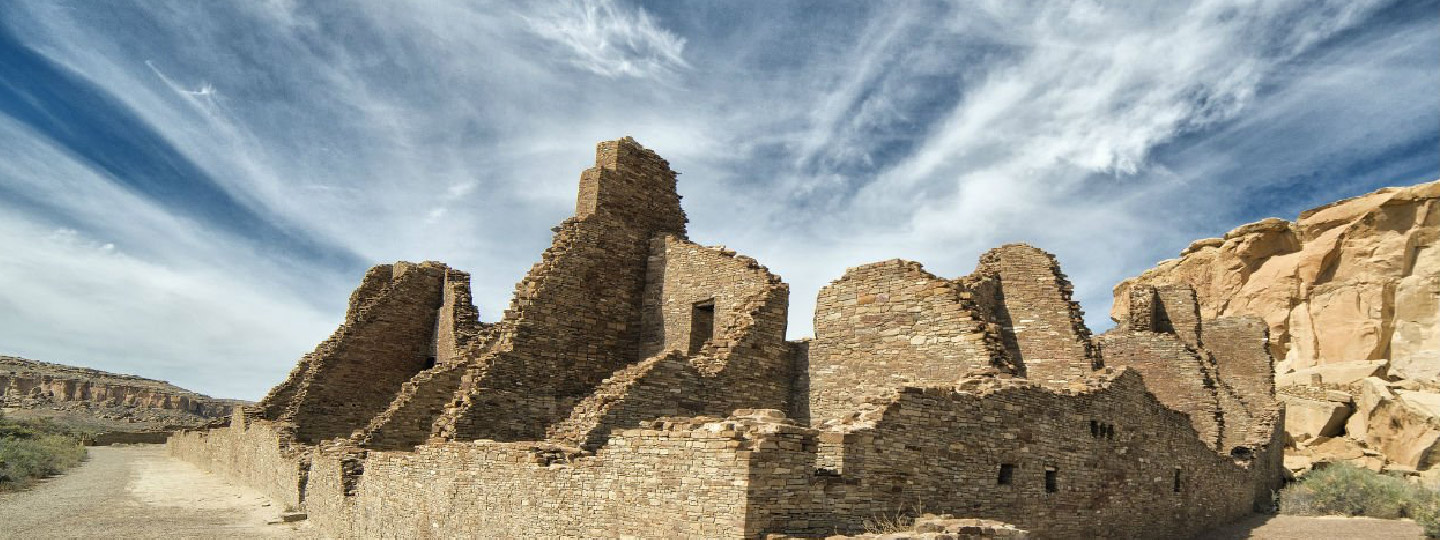
Chaco Today
Chacoan Roads
Chacoan roads are another defining aspect of the Chaco Culture. An elaborate road system served to connect great houses and significant landscape features across the Greater Chaco Region. There are over 100 miles of prehistoric roads associated with Chaco, some of which can still be traced today. Like Chacoan great houses, these roads were massive and built with a high level of engineering skill. They were also remarkably linear. While most roads and trails contour with the landscape, Chacoan roads follow direct lines to a destination, often going over, rather than contouring around, major landscape features and taking angular bends instead of gentle curves. Some of these roads extended for miles in a single direction.
Astroarcheology
Chaco Culture was intimately linked to the stars. The Chacoan people were expert skywatchers, with a strong connection between celestial events and daily life. This connection to the stars is evident in the architecture of the great houses where architectural features are aligned with significant astronomical events. Similar alignments are found in observational and ceremonial sites throughout the Greater Chaco Region.
With astronomy as a center point of culture, dark night skies were an integral component of Chacoan life. This feature is largely preserved today as the night sky of the Greater Chaco Region remains one of the most unpolluted in the U.S. This unique characteristic is threatened by encroaching large-scale oil and gas development.
The Greater Chaco Landscape
The Greater Chaco Region radiates from the main park at its center, expanding across the Four Corners Region and the San Juan Basin with ties to other well-known cultural sites such as Mesa Verde, Canyon of the Ancients, Bears Ears, Hovenweep and Aztec Ruins. Chacoan roads, greathouses, villages, sacred sites and other places of significance are scattered across this larger landscape. Chaco and the Greater Chaco Region continue to retain significance to modern-day indigenous peoples as a connection to their ancestors and history, places of traditional use and sacred sites, and for some their home.
![]()
- Chaco Culture National Historic Park is a World Heritage Site
- Chaco preserves a prehistoric center for ceremony and trade
- Chaco and many sites continue to be sacred for modern-day Pueblo
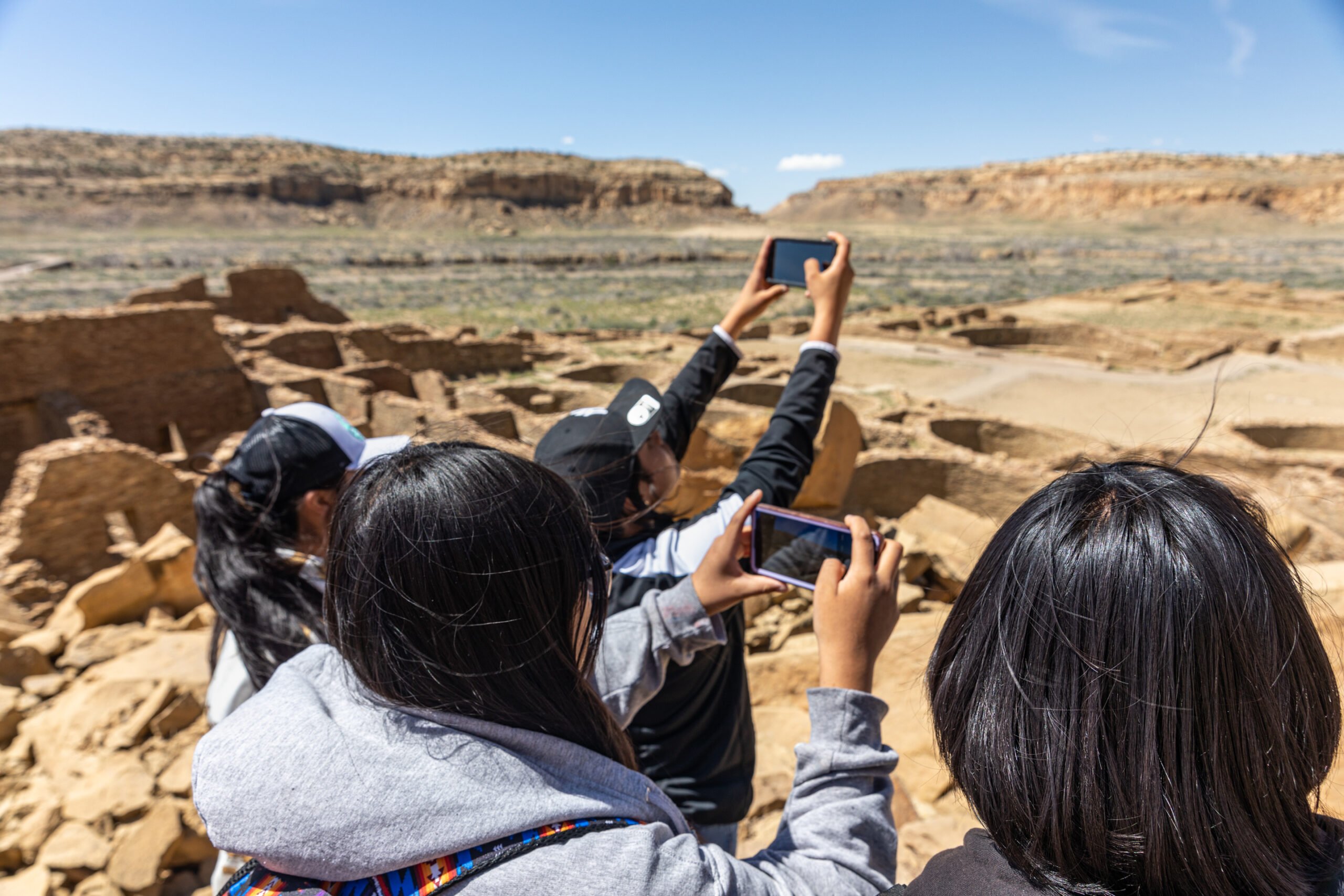
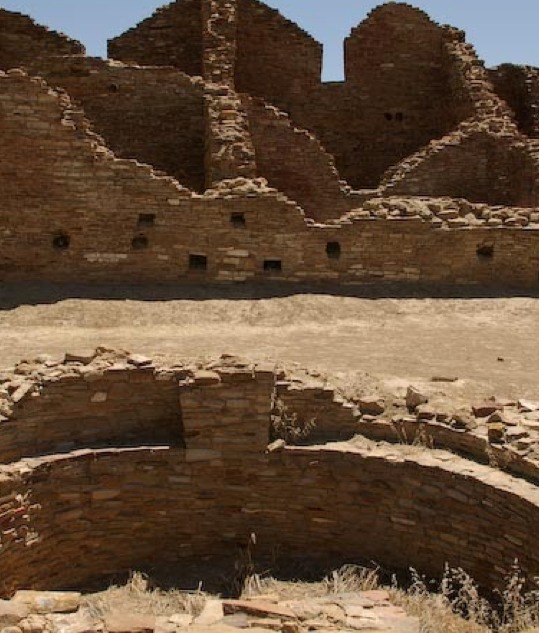
Chaco Tomorrow
Buffer around Chaco and outlier sites
Conservation groups have been advocating for a moratorium on leasing within a 10 to 20-mile buffer around Chaco Culture National Historical Park and sufficient buffers around outlier sites to protect their cultural values. With the agency currently completing an amendment to their land-use plan to address increased oil and gas development in the Mancos-Gallup Formation near the park, groups have asked that all leasing within this buffer be postponed until the plan amendment is finalized. The agency has not formally agreed to this and has instead postponed leases in the buffer zone on a case-by-case basis.
Tribal consultation and interagency cooperation in management decisions
Interagency and inter-tribal cooperation and tribal consultation by agencies are important components of ensuring Chaco’s past, present and future are protected. We support government-to-government consultation between tribal governments and federal agencies including the Bureau of Land Management (BLM), Bureau of Indian Affairs (BIA) and National Park Service (NPS) during actions or management plans that may affect Chaco Canyon, traditional cultural properties and sacred sites in the Greater Chaco Region. This cooperation should also consider preservation of Chaco’s dark night skies and the sensitive natural landscapes and ecology of the Greater Chaco Region.
 Impact for our Efforts
Impact for our Efforts
Despite the current political challenges, we’re proud of the legislative and regulatory victories that have been achieved.
Become a Subscriber to Our E-News and Alerts
By clicking the Button you are confirming that you agree with our Privacy Policy.

